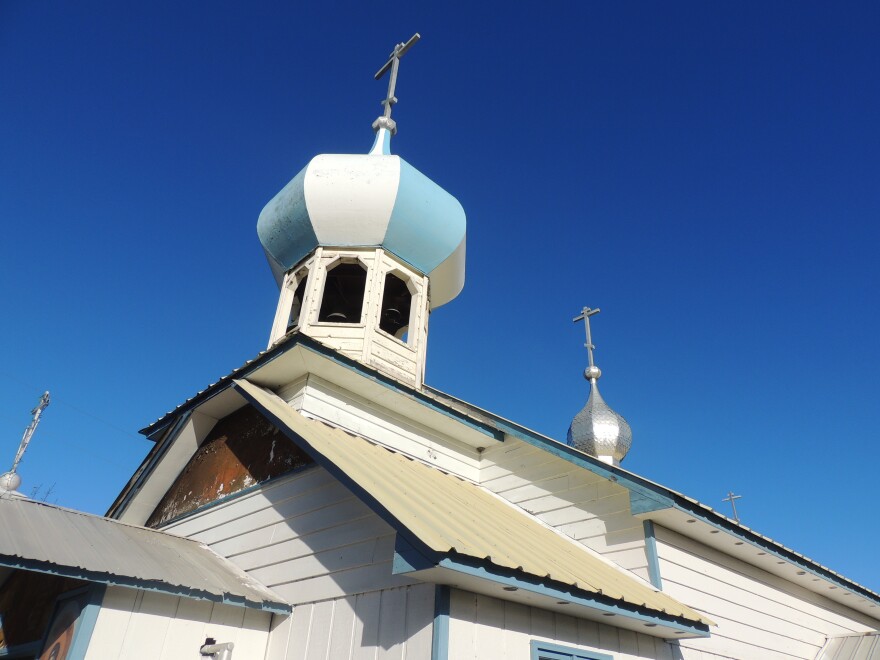Kenai Peninsula school board members have officially dropped six schools from the list of nine it was thinking about closing amid a budget shortfall. The decision brought relief to some communities, but leaves others in limbo.
School board members haven’t made any final decisions about whether they will actually close any schools. But after considering projected enrollments, deferred maintenance, transportation costs and potential impacts on other schools expected to absorb new students, they know Sterling Elementary, Tustumena Elementary and the K-12 Nikolaevsk School could still be on the chopping block.
No longer in the mix are Homer Middle, McNeil Canyon Elementary, Moose Pass, Nikiski Middle/High, Paul Banks Elementary and Seward Middle schools.
Fourth-grader Tasia Prevost read school board members a list of reasons why she wants her school to stay open.
“We can easily get to school by walking or driving four-wheelers,” she said. “We would not be able to get in from a bus stop. We get to spend extra time doing activities at the school like art and music.”
Prevost is a student at Nikolaevsk, in the Russian Old Believer village of the same name 10 miles east of Anchor Point. The school is built for 175 students. But next school year, the district expects just 19 to enroll. That’s partly why it topped the list the district published last month of schools for the board to consider closing.
“We were asked to bring forward a list of our schools that are under capacity,” said Superintendent Clayton Holland. “There are multiple of those schools. We identified the top nine.”
Sterling Elementary is about 100 kids under capacity; Tustumena is about 260 under capacity. Those schools’ students could move to a handful of other central Kenai Peninsula schools.
In Nikolaevsk’s case, students would either go to Homer High School, which is currently under capacity, or to Chapman School, which is already over capacity.
At the school board’s regular meeting Monday evening, multiple people pleaded with board members to keep Nikolaevsk School open. One of those was Blake Sawyer. He’s a dad of five, with three kids already attending the school, and says his family’s struggled with home-schooling in the past.
“I know a lot of them are, you know, doing the home-school thing,” he said. “And we tried doing that, but it just didn’t work. My wife and I – we’re not teachers. I know how to fix computers, I don’t know how to teach kids.”
Nikolaevsk Principal Diane Maples told the board her school is just starting to rebuild trust with community members. She says closing it now would undo their progress. As previously reported by KDLL, the school had five students enrolled at the end of the 2021-2022 school year. That’s compared to 23 students counted in February.
“If families lose trust in public education, they may not just leave Nikolaevsk, they may leave the district,” she said. “And once they leave, how do we bring them back? That is something I face today at Nikolaevsk – how do we bring them back once they’re gone?”
It’s been a rocky few years for the school. Since 2022 parents have unsuccessfully tried to open a charter school in the community. Parents launched an independent home-schooling cooperative, with many later switching to the district’s home-school program.
Now, some of the same parents who were once concerned about the school’s trajectory say it’s back on track. One of those parents is Juliana McConnell, who previously helped draft the community’s charter school application.
“I implore you guys, don’t close that school,” she said. “That school has so much potential and this last year has been amazing. After everything we’ve been through, it’s been great.”
In all closure scenarios, the district points out the money saved would be highest in the first two years, then drop off over time because of state funding rules. At Nikolaevsk, the district estimates it could save about half a million dollars in the initial years if it were closed.
The Soldotna and Tustumena scenarios have their own challenges. An unresolved school maintenance bond from 2022 has put the futures of some central Kenai Peninsula schools into limbo. That means it’s not guaranteed the district could put displaced students where it wants to.
“I think we have to factor this into that – how that overall picture looks,” Holland said. “So before we move on with these two, Sterling and Tustumena, we have to have a better idea of the complete package which involves that bond.”
Also on Monday, the school board created three draft budgets that each assume different levels of state funding. None of the three factors in cost savings associated with closing schools.
But board members say closing schools is a multi-year conversation. A school that isn’t closed next school year isn’t guaranteed to stay open the following year.




